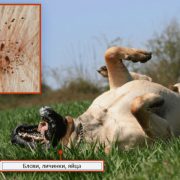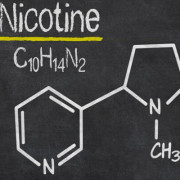Конопля сорная или дикая
Содержание:
- Как отличить дикую коноплю
- Use in auto-flowering cannabis strains
- Capacidad de autofloración
- Os usos comuns
- Ciclo rápido de crecimiento
- Вред сативы и индики для здоровья
- Origem e intervalo
- Características
- Morfologia
- Use em cepas de maconha auto-floração
- Cultivo
- Genetic origin
- Ruderalis Effects
- Интересные факты
- Конопля: особенности растения
- Cultivation
- Что такое дикая конопля
- Практическое применение растения
- What Is Ruderalis?
- Little-Known Species with Huge Power
- Morphology
- Common uses
- Origin and range
- Breeding Cannabis Ruderalis Hybrids
Как отличить дикую коноплю
Несмотря на схожесть культурного и сорного подвидов, существуют признаки отличия:
- У дикой конопли ветвление начинается у основания стебля на расстоянии 1,5-3 см от земли. Структура размещения веток рыхлая. У культурных же сортов расположение ветвей на высоте 28-30 см от почвы. Растение выглядит более компактным.
- У cannabis ruderalis плоды со средней длиной 3 мм и шириной 2 мм. Цвет темно-серый неоднородный, плохо видно сетчатую оболочку шишек с черными жилками. Вес семян в 1,5-2,5 раза меньше, чем у культурных видов. Плоды у других сортов конопли более крупные, средней длины 4 мм и ширины 3 мм. Окрас серовато-зелёный или серый. Шишки одноцветные, гладкие, блестящие с заметной сетчатой плодовой оболочкой с белыми жилками.
Биологические особенности дикой конопли:
-
- энергичный рост и развитие;
- раннее цветение у мужских особей;
- быстрое созревание;
- легкое осыпание плодов.
Для сорного растения характерно сохранение внешнего вида независимо от условий окружающей среды. Оно неприхотливо, прекрасно приспосабливается к любым условиям, температурным колебаниям, не зависит от продолжительности светлого времени суток. Культурные сорта, наоборот, капризны, требуют определенного ухода, специальных условий выращивания.
Use in auto-flowering cannabis strains
Because C. ruderalis transitions from the vegetative stage to the flowering stage with age, as opposed to the light cycle required with photoperiod strains, it is bred with other household sativa and indica strains of cannabis to create «Auto-flowering cannabis strains». These strains are favorable for cultivars because they exhibit the hardiness of ruderalis plants while still maintaining the medicinal effects of sativa and indica strains. The Auto-flowering trait is extremely beneficial because it allows for multiple harvests in one outdoor growing season without the use of light deprivation techniques necessary for multiple harvest of photo-period strains. As a result of ruderalis genetics, auto-flowering plants typically have much higher CBD levels than photo-period cannabis.
Capacidad de autofloración
La característica más notable de la variedad ruderalis radica en su capacidad de florecer (y, por lo tanto, reproducirse) de acuerdo con la edad de una planta concreta, independientemente del fotoperiodo en que crezca.
Casi todas las plantas en floración perciben cuándo es momento de reproducirse gracias a los cambios de estación en el clima, especialmente en relación al número de horas de luz diurna. La capacidad para iniciar la floración de acuerdo con cambios en la planta y no de su entorno se conoce como ‘autofloración’.
C. ruderalis es menos llamativa para insectos siendo menos atacadas por estos por su bajo contenido en tempenoides. Empezará a florecer cuando alcance una determinada fase de madurez –alrededor del momento en que produzca entre el quinto y el séptimo par de hojas (entre su quinto y su séptimo nudo), lo que normalmente ocurre tras un periodo de entre cinco y siete semanas de crecimiento. Una vez ha empezado a florecer, sigue haciéndolo hasta que otros factores ambientales (sobre todo el invierno) hacen que la planta muera. Las otras variedades de Cannabis pueden expirar naturalmente una vez han completado su reproducción o pueden regresar al crecimiento vegetativo si disfrutan de un fotoperiodo largo.
Os usos comuns
Ruderalis Cannabis é tradicionalmente usada na medicina popular russa e mongol, especialmente para usos no tratamento de depressão . Porque C. ruderalis está entre o menor THC produzir biótipos de cannabis , C. ruderalis é raramente usado para fins recreativos.
Em utilização moderna, C. ruderalis foi cruzada com estirpes Bedrocan para produzir a estirpe Bediol para pacientes com prescrições médicas. C. sativa e C. indica estirpes cruzadas com Ruderalis plantas exibem tipicamente a «autoflorescente» fenótipo exibido pelo C. ruderalis linhagem, o que significa que eles flor quando a planta atinge uma certa maturidade (normalmente dez semanas de semente), em oposição à floração constante acordo com os esquemas de luz diárias. Além disso, devido à tipicamente maior concentração de canabidiol (CBD), ruderalis plantas são valiosos para os pacientes que procuram para tratar a ansiedade ou epilepsia. C. ruderalis também está a ser utilizado como uma forma de tratamento do cancro, bem como a esclerose e perda de apetite.
Ciclo rápido de crecimiento
La adaptación de Cannabis ruderalis a veranos cortos y frescos se pone de manifiesto en otras áreas. El ruderalis tiene la capacidad para completar su ciclo vital –desde su fase de semilla hasta la producción de semillas- en solamente 10 semanas (aunque es más común que sean de 12 a 14 semanas). Sus semillas se desprenden con facilidad y pueden sobrevivir más de una estación sobre terreno helado –hasta que las condiciones sean lo suficientemente favorables para permitir el crecimiento. Las semillas también pueden sobrevivir aunque su cáscara se abra al ser pisada por humanos o animales. En el caso de algunas variedades de ruderalis, este hecho puede incluso contribuir a la germinación de las semillas.
Вред сативы и индики для здоровья
Многими странами они признаны наркотическими растениями.
Вред для здоровья при регулярном употреблении:
- сексуальная дисфункция у мужчин;
- снижение общего иммунитета;
- значительное снижение реакции, что очень опасно при вождении автомобиля;
- увеличение риска появления психоза;
- рост вероятности воспаления десен;
- высокий риск развития острой потери памяти;
- при наличии генетической предрасположенности увеличение риска возникновения депрессии;
- патологии органов дыхания (от кашля до эмфиземы);
- увеличение риска инфекционных заболеваний горла;
- повреждение ДНК, приводящее к увеличению вероятности развития рака;
- повышенный риск появления тяжелой рвоты;
- уменьшение уровня интеллекта;
- высокая вероятность рака яичек;
- при гепатите С повышение возможности развития фиброза печени и появления рубцов на ее ткани;
- при совмещении с табакокурением рост риска онкологических заболеваний;
- возникновение проблем с менструальным периодом у женщин;
- появление физической и психической зависимостей;
- кислородное голодание мозга.
Медики напоминают, что конопля является стартовым наркотиком. После появление зависимости от каннабиса высока вероятность перехода к более тяжелым наркотическим средствам.
Несмотря на то, что индика и сатива являются близкими родственниками, их психотическое воздействие на человека сильно различается, что связано с химическим составом.
Присутствующие в каннабисе наркотические компоненты при регулярном применении вызывают зависимость и приводят к ухудшению состояния здоровья — как психического, так и соматического.
Origem e intervalo
Ruderalis Cannabis foi primeiro cientificamente identificado em 1924 no sul da Sibéria, embora também cresce selvagem em outras áreas da Rússia. O botânico russo, Janischewski, estava estudando selvagens Cannabis no Rio Volga sistema e percebeu que tinha caído sobre uma terceira espécie. C. ruderalis é uma variedade mais resistente crescido no Himalaia do norte e estados do sul da antiga União Soviética, caracterizados por, um crescimento de «convivência» mais escassa.
Semelhante C. ruderalis populações podem ser encontrados na maioria das áreas onde o cultivo de cânhamo era uma vez prevalente. A região mais notável na América do Norte é o oeste dos Estados Unidos , embora as populações ocorrem esporadicamente em todo os Estados Unidos e Canadá. Grandes selvagens C. ruderalis populações também são encontrados na Europa Central e Oriental, a maioria deles na Ucrânia , Lituânia , Bielorrússia , Letónia , Estónia e países adjacentes. Sem seleção humana, estas plantas perderam muitas das características que foram originalmente selecionadas para, e ter aclimatados ao seu ambiente.
Características
Referente a su interés en la cannabicultura, es apreciada porque se utiliza para hacer genéticas y experimentar así con sus ventajas, comprobando sus propiedades y los posibles rasgos favorables de las generaciones sucesivas. Debido a su casi nulo contenido en THC (el componente psicoactivo) y a su alto contenido en CBD (el componente no psicoactivo tan apreciado en medicina) es una genética muy utilizada para fabricar inciensos y esencias de manera artesanal.
El término ruderalis se deriva del latín rudera, que es la forma plural de rudus, una palabra latina que significa escombros, trozos o piezas aproximada de bronce. Ruderal es un término referente a especies de plantas silvestres que son las primeras en colonizar tierras que han sido alteradas por fuerzas naturales o por la actividad humana. Las especies ruderalis suelen crecer a los lados de las carreteras o en tierras agrícolas que se han dejado en barbecho.
Cannabis ruderalis se describe provisionalmente como el tercer tipo de cannabis, ya que los botánicos no están seguros de si constituye una especie por derecho propio. La planta ruderalis es una variedad no cultivada procedente de Rusia, Europa central y Asia central y se adapta a las duras condiciones ambientales de estos lugares. Ya sean considerados solo una variación de la misma especie de cannabis o una especie diferenciada en sí misma, lo más probable es que las variedades ruderalis de cannabis procedan de las variedades índicas que, a su vez, probablemente desciendan de las sativas.
Las diferencias entre estos tres tipos, en cuanto a los patrones de crecimiento y reproducción, pueden relacionarse con los entornos enormemente diferentes en que vivió el fenotipo tropical original Cannabis sativa L. A medida que se extendía más y más al norte del ecuador tras la última edad de hielo, los diferentes tipos evolucionaron para sobrevivir en nuevos climas. La intervención humana y la agricultura también tuvieron efectos significativos sobre los acervos genéticos de índica y sativa, pero mucha menos influencia sobre el silvestre ruderalis.
La planta típica de Cannabis ruderalis es muy baja de estatura, a menudo entre 3 dm y 8 dm ( 30 cm y 80 cm) cuando ha alcanzado su pleno crecimiento. Produce solo unas pocas ramas y tiene hojas anchas y de limbos gruesos, similares a las del Cannabis indica. Una vez empieza la floración, la variedad ruderalis ganará todavía menos altura que la variedad indica.
C. ruderalis es una variedad más resistente crece en el Himalaya estados del norte y sur de la antigua Unión Soviética, que se caracteriza por un crecimiento de «malas hierbas» más escasa. Rara vez se cultiva por su contenido de THC sino por su amplia gama aromática. Cabe destacar el aprovechamiento de la potencia aromática del cannabis, conociendo esta característica se han mezclado diferentes genéticas rudelaris para conseguir aromas muy diferentes.
Las poblaciones de C. ruderalis se pueden encontrar en la mayoría de las áreas donde el cultivo del cáñamo antiguamente prevaleció. La región más notable en América del Norte es el medio oeste de Estados Unidos, aunque las poblaciones ocurren esporádicamente en los Estados Unidos y Canadá. Las grandes poblaciones de C. Ruderalis salvaje se encuentran mayormente en Europa central y oriental, la mayoría de ellas en Lituania, Bielorrusia, Letonia, Estonia y los países adyacentes. Sin selección humana, estas plantas han perdido muchas de las características seleccionadas inicialmente para su producción, y se aclimataron generación tras generación a su entorno.
Morfologia
Cannabis ruderalis é menor do que outras espécies de cannabis . C. ruderalis raramente cresce mais de dois pés de altura. As plantas têm «magro, ligeiramente fibrosa caules», com pouca ramificação. Folhagem é tipicamente aberto com folhas grandes, C. RUDERALIS atinge a maturidade muito mais rápida do que outras espécies de cannabis, tipicamente num período de cinco a sete semanas a partir de sementes.
Ao contrário de outras espécies de cannabis, cannabis ruderalis entra na fase de floração com base na maturidade da planta, em vez do seu ciclo de luz . Com C. sativa e C. indica variedades, é possível manter a planta no estado vegetativo indefinidamente, mantendo um ciclo de luz do dia longo. C. ruderalis , no entanto, vai entrar na fase de floração, independentemente da duração da luz por dia. Cannabis geneticistas hoje referem-se a esse recurso como » auto-floração « .
Ele tem menos de THC no seu resina em comparação com outras espécies de Cannabis. No entanto, muitas vezes é alta em canabidiol ( CBD ).
Use em cepas de maconha auto-floração
Porque C. ruderalis transições da fase vegetativa para a fase de floração com a idade, em oposição ao ciclo de luz necessária com estirpes de fotoperíodo, que é produzido com outros doméstico sativa e indica estirpes de cannabis para criar «estirpes de cannabis de auto-floração». Estas estirpes são favoráveis para cultivaters porque exibem a resistência de Ruderalis plantas, mantendo os efeitos medicinais da sativa e indica estirpes. O traço Auto-floração é extremamente benéfico, pois permite múltiplas colheitas em uma estação de crescimento ao ar livre sem o uso de técnicas de privação de luz necessários para múltiplos colheita de estirpes foto-período. Como resultado da Ruderalis genética, plantas auto-floração normalmente têm níveis de CBD muito maiores do que foto-período cannabis .
Cultivo
Sementes de C. ruderalis foram trazidos para Amsterdam no início de 1980 a fim de reforçar o programa de melhoramento genético da Seed Bank.
Cannabis ruderalis tem um menor THC conteúdo do que qualquer C. sativa ou C. indica , por isso raramente é cultivada para uso recreativo e quanto menor estatura de C. Ruderalis limita a sua aplicação para a produção de cânhamo. Cannabis ruderalis cepas são elevados na cannabіnoid canabidiol (CBD), então eles são cultivadas por alguns usuários de maconha medicinal.
No entanto, C. ruderalis ‘cedo, planta-idade desencadeada ‘autoflorescente’ característico (que oferece algumas vantagens agrícolas ao longo dos fotoperíodo variedades de floração), bem como a sua resistência a fama de pressões insetos e doenças torna atraente para plantar criadores. C. indica estirpes são frequentemente cruzados com C. RUDERALIS para produzir plantas autoflorescentes com teor de THC elevado, resistência melhorada e a altura reduzida. Uma estirpe, identificado em 1960, é Cannabis x intersita Sojak que é um cruzamento entre C. sativa e C. ruderalis . Tentativas de produzir um Cannabis tensão com uma estação de crescimento mais curtos são outra aplicação de cultivar C. ruderalis . C. RUDERALIS quando cruzados com sativa e indica estirpes produz uma planta que flores automaticamente e é totalmente madura em 10 semanas.
Genetic origin
It is widely accepted C. ruderalis is its own species, rather than a subspecies from C. sativa. C. ruderalis as classified in 1924 by D. E. Janischewsky, noting the visible differences in seed, shape and size from previously classified Cannabis sativa. ruderalis represent feral types of cannabis which have higher CBD levels and a more cerebral effect, this combined with the high delta9-thc levels from the C. sativa gives the most potent strains , c. ruderalis occupies regions farther north in latitude. Chemotaxanomic analysis reveals that C. ruderalis is shown to have lower THC levels to the feral biotype of C. sativa.
Ruderalis Effects
Pure ruderalis cannabis isn’t a species that will typically be found in a dispensary, so the only people who get to experience consuming it are those who grow it themselves. Ruderalis is known for the following effects:
No significant high
The extremely low levels of THC (tetrahydrocannabinol) in cannabis ruderalis means it doesn’t cause psychotropic effects. The fact that the species causes so little in terms of a high is part of the reason it’s rarely grown as a pure species and has largely been overlooked by recreational consumers.
Calming and relaxing
Its high CBD (cannabidiol) content makes it an excellent kind of cannabis for medicinal purposes. It’s especially good for medical marijuana patients who would like the benefits of CBD without the high of THC. Marijuana that is high in CBD is typically recommended for people with anxiety or insomnia due to its calming effects.
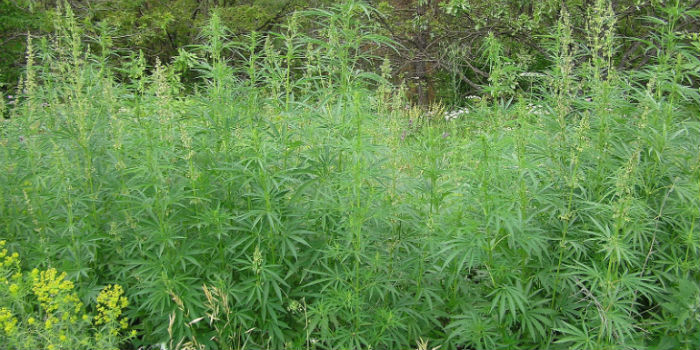
Ruderalis cannabis is of particular interest to medical marijuana patients due to its low THC and high CBD content. (Credit: Le Loup Gris)
Интересные факты
- Дореволюционная Россия специализировалась на экспорте конопляной пеньки.
- Конопля служит сырьем для почти 6 тысяч изделий, в том числе одежды, бумаги, ДВП, спирта, бензина.
- Из конопляных семян получается вкусная каша.
- Существуют гашишные и безгашишные (концентрация психотропных веществ не превышает 0,1%) сорта конопли.
- Выраженными наркотическими свойствами обладает только Cannabis Indica.
- Ткани, изготовленные из конопли, более долговечны.
- Первая в мире бумага была изготовлена в Китае из конопли.
- Из этого растения можно производить экологически чистое горючее.
- Это растение защищает аграрные культуры от фитофтороза, колорадских жуков, медведки и тараканов.
Конопля является одним из мощнейших растений в фитотерапии, но из-за плохой репутации немногие решаются употреблять ее. Это растение запрещено во многих странах мира, как вредное психотропное. Однако еще 5000 лет назад человечество использовало его, как лечебное средство, а древние русичи в качестве пищи и для многих других целей
В настоящее время современное человечество все чаще обращает внимание на полезные свойства канабиса, вспоминая, что, кроме опасного наркотического вида, существуют и безгашишные сорта
- Источники
- Серков В. А., Смирнов А. А., Александрова М. Р. – История коноплеводства в России, 2018.
- Сухорада Т. И. – Селекция безнаркотических сортов южной конопли и элементы их сортовой агротехники. –Краснодар, 2005.
Больше свежей и актуальной информации о здоровье на нашем канале в Telegram. Подписывайтесь: https://t.me/foodandhealthru
Автор статьи:
Извозчикова Нина Владиславовна
Специальность: инфекционист, гастроэнтеролог, пульмонолог.
Общий стаж: 35 лет.
Образование: 1975-1982, 1ММИ, сан-гиг, высшая квалификация, врач-инфекционист.
Научная степень: врач высшей категории, кандидат медицинских наук.
Повышение квалификации:
- Инфекционные болезни.
- Паразитарные заболевания.
- Неотложные состояния.
- ВИЧ.
Другие статьи автора
Будем признательны, если воспользуетесь кнопочками:
Конопля: особенности растения
Конопля (каннабис) — однолетнее раздельное двудомное растение семейства коноплевых. Высота взрослого экземпляра не менее 40 см и может достигать 4 метров. Матерка — женская особь, посконь — мужская. Опыление происходит перекрестным способом. Существуют и однодомная конопля и гермафродит, но они используются в сельскохозяйственной сфере, не обладают наркотическим эффектом.
Мужские и женские особи отличаются по многим параметрам:
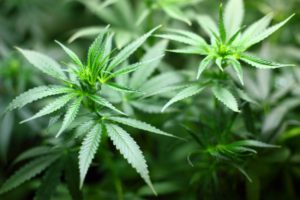
- биохимическим;
- морфологическим;
- физиологическим;
- технологическим.
Различно также и строение цветков, по сути, являющихся органами полового размножения.
Женские растения имеют более длительный вегетационный период (40-50 дней), а мужские особи созревают через 50-60 дней после раскрытия цветков. Различие в этих сроках затрудняет сбор урожая техникой, поэтому мужские саженцы убирают в основном вручную.
Растение имеет три подвида:
- Indica — Индийская конопля (индика);
- Sativa — сатива;
- Ruderalis — Сорная конопля.
Именно первые два варианта и представляют ценность для наркоманов.
Cultivation
Seeds of C. ruderalis were brought to Amsterdam in the early 1980s in order to enhance the breeding program of the Seed Bank.
Cannabis ruderalis has a lower THC content than either C. sativa or C. indica, so it is rarely grown for recreational use and the shorter stature of C. ruderalis limits its application for hemp production. Cannabis ruderalis strains are high in the cannabіnoid cannabidiol (CBD), so they are grown by some medical marijuana users.[citation needed]
However, C. ruderalis‘ early, plant-age triggered «autoflowering» characteristic (which offers some agricultural advantages over the photoperiodic flowering varieties) as well as its reputed resistance to insect and disease pressures makes it attractive to plant breeders.C. indica strains are frequently cross-bred with C. ruderalis to produce autoflowering plants with high THC content, improved hardiness and reduced height. One strain, identified in 1960, is Cannabis x intersita Sojak which is a cross between C. sativa and C. ruderalis. Attempts to produce a Cannabis strain with a shorter growing season are another application of cultivating C. ruderalis.C. ruderalis when crossed with sativa and indica strains produces a plant which flowers automatically and is fully mature in 10 weeks.
Что такое дикая конопля
Cánnabis ruderális (дикая конопля) – самосевное цветковое растение, разновидность посевной культуры. Описана как подвид в 1924 году Д. Янишевским. Имеет характерные признаки:
- строение в форме елки – с центральным стеблем и отходящими в разные стороны ветками;
- листья состоят из 5-7 сегментов с зубчиками и острыми концами;
- семена двудольные (женского и мужского типа);
- плод в виде яйцевидного орешка серо-бурого цвета.
Плоды дички легко осыпаются, засоряя вокруг себя грунт. Весной посевы дружно всходят. Период созревания составляет 60-90 дней. Растения мужского вида продуцируют коробочки с пыльцой, а женского – опыляются. Дикая конопля редко вырастает выше 60 см. В благоприятных условиях может достигать трех метров.

Практическое применение растения
Не зря издавна на Руси так ценили коноплю за ее широкую сферу применения. В растении особенно ценны стебель и семена.
- Изготовление прочной и износоустойчивой ткани. Конопляное волокно использовалось в мореходстве для плетения канатов, тросов, парусины. В настоящее время из растения делают брезент, прочную спецодежду.
- Производство экологически чистой бумаги. Американские доллары печатаются на конопляном сырье. Такое производство более рентабельно по сравнению с аналогичным на древесине.
- Использование в качестве топлива для обогрева жилищ. Стебли растения прессуются в брикеты для сжигания в котлах и печах.
- Производство строительных материалов. Прессованные плиты (древесноволокнистые) из стебля растения прочнее, эластичнее и надежнее, чем из дерева.
- Изготовление материалов для мебельной промышленности.
- Отжим масла. Семена конопли богаты жирами и протеинами. Отжатое масло подходит для употребления в пищу, а также на его основе возможно производство олифы – основы для лакокрасочной продукции.
- Сырье для фармацевтической промышленности. Лечебные свойства дикой конопли известны с незапамятных времен. На основе растения выпускаются обезболивающие, успокоительные, препараты от астмы.
- Сырье для косметических средств.
- Получение жмыха – корма для животных.
What Is Ruderalis?
Cannabis ruderalis is a little-known kind of marijuana that is known for its ability to grow in conditions that would kill most cannabis plants. Ruderalis cannabis originates from Asia and Central/Eastern Europe – areas with climates too harsh for other cannabis species to survive.
Ruderalis seeds are incredibly hardy and can continue living even after they’ve been cracked open by being stepped on. They detach from the plant easily and can survive, dormant, in the frozen ground until conditions are favorable for the plant to grow.
The name ruderalis comes from the words ruderal or rudera, Latin terms that mean “rubble” in English. Ruderal plants are wild plant species that can flourish in land that’s been disturbed by human activity (such as construction) or natural disasters. It’s often found growing near roadsides or on farmland that’s been plowed and left unsown.
Many years ago, ruderalis grew wild, but today, breeders have harnessed the power of ruderalis to make hardy and spectacular hybrids.
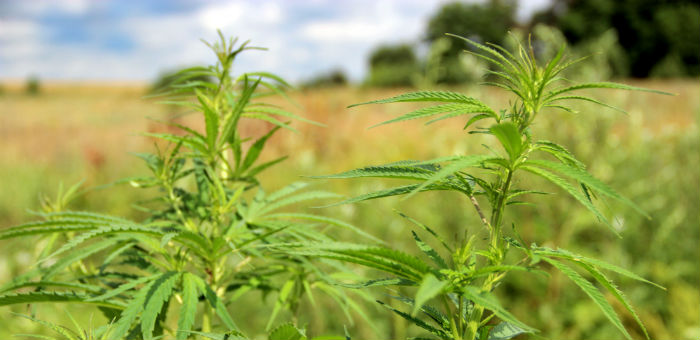
The ruderalis plant thrives in areas with climates too harsh for other cannabis species to survive.
Little-Known Species with Huge Power
Although ruderalis cannabis bud may not be among the offerings at marijuana dispensaries, most consumers don’t realize the impact that this little-known cannabis species has on their overall selection and experience. Using the power of cannabis ruderalis, growers are able to alter the genetics of their other strains – giving them autoflowering characteristics, boosting their CBD levels, and ensuring a hardier, more robust cannabis crop.
Author: John White John is the founder and CEO of CNBS and is in charge of our brand relations, website management, media and press inquiries, industry overviews, B2B guides, and more. Passionate about educating on its benefits – John has been using cannabis to relief and manage his chronic pain for almost 12 years, working as an external consultant in the private cannabis sector for more than five years, and growing cannabis for personal use for almost eight years. About | | | Contact
Category Pages:
- Cannabis Types — A guide to the different types of cannabis: sativa, indica, hybrids, hemp, and ruderalis.
- Cannabis Indica — From couch-lock to pain relief, what is cannabis indica and how it helps people chill out and feel better.
- Cannabis Ruderalis — (CURRENT PAGE)
- Cannabis Sativa — An exploration of sativa effects, medical uses, and characteristics of the sativa plant.
- Hybrid Cannabis — A 101 guide to hybrid marijuana – from growing hybrids to their effects.
- Industrial Hemp — A guide to industrial hemp uses and the health benefits of hemp.
- Sativa vs Indica — The difference between sativa and indica: from effects to plant characteristics.
Related Categories:
Morphology
Cannabis ruderalis is smaller than other species of Cannabis. C. ruderalis rarely grows over two feet in height. Plants have «thin, slightly fibrous stems» with little branching. Foliage is typically open with large leaves,C. ruderalis reaches maturity much quicker than other species of Cannabis, typically in a five to seven week period from seed.
Unlike other species of cannabis, Cannabis ruderalis enters the flowering stage based on the maturity of the plant, rather than its light cycle. With C. sativa and C. indica varieties, it is possible to keep the plant in the vegetative state indefinitely by maintaining a long daylight cycle. C. ruderalis, however, will enter the flowering stage regardless of daily light duration. Cannabis geneticists today refer to this feature as «auto-flowering».
It has less THC in its resin compared to other Cannabis species. However, it is often high in cannabidiol (CBD).
Common uses
Cannabis ruderalis is traditionally used in Russian and Mongolian folk medicine, especially for uses in treating depression. Because C. ruderalis is among the lowest THC producing biotypes of Cannabis, C. ruderalis is rarely used for recreational purposes.
In modern use, C. ruderalis has been crossed with Bedrocan strains to produce the strain Bediol for patients with medical prescriptions.C. sativa and C. indica strains bred with ruderalis plants typically exhibit the «autoflowering» phenotype exhibited by the C. ruderalis lineage, meaning that they flower when the plant reaches a certain maturity (usually ten weeks from seed) as opposed to flowering in accordance with the daily light schedules. In addition to this, due to the typically higher concentration of cannabidiol (CBD), ruderalis plants are valuable for patients looking to treat anxiety or epilepsy.C. ruderalis is also being used as a form of cancer treatment as well as sclerosis and loss of appetite.
Origin and range
Cannabis ruderalis was first scientifically identified in 1924 in southern Siberia, although it also grows wild in other areas of Russia. The Russian botanist, Janischewski, was studying wild Cannabis in the Volga River system and realized he had come upon a third species.C. ruderalis is a hardier variety grown in the northern Himalayas and southern states of the former Soviet Union, characterized by a more sparse, «weedy» growth.
Similar C. ruderalis populations can be found in most of the areas where hemp cultivation was once prevalent. The most notable region in North America is the midwestern United States, though populations occur sporadically throughout the United States and Canada. Large wild C. ruderalis populations are also found in central and eastern Europe, most of them in Ukraine, Lithuania, Belarus, Latvia, Estonia and adjacent countries. Without human selection, these plants have lost many of the traits they were originally selected for, and have acclimated to their environment.
Breeding Cannabis Ruderalis Hybrids
Because there is no “ruderalis high” due to its low THC levels, ruderalis isn’t popular among recreational consumers – but it is of extreme interest to marijuana breeders. Most growers use ruderalis not as a standalone crop, but as an opportunity to create hybrids that contain ruderalis traits. Specifically, breeders value ruderalis because it’s an autoflowering sub-species that automatically begins to flower between 21 and 30 days, regardless of whether the grower manipulates the plant’s lighting.
The characteristics of ruderalis allow growers to create sativa/indica/ruderalis hybrids that contain potent levels of THC and will flower automatically.
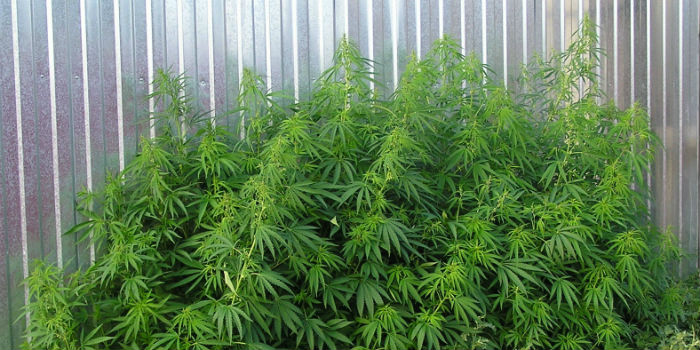
The autoflowering characteristics of cannabis ruderalis make it of particular interest to marijuana growers.

